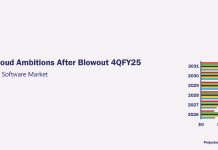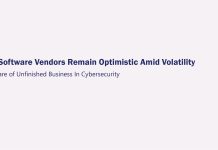Oracle OpenWorld, the annual customer conference of the leading database vendor, took on a different format with a more disciplined approach this year.
Keynotes were shorter, messaging more pointed (mostly on customer successes) and emphasis on core products, partners and startups were unmistakable.
Day one was filled with a host of product previews, announcements as well as a compact keynote from its co-founder and CTO Larry Ellison, who has had his share of long and meandering monologues over the past 20 years headlining Oracle OpenWorld.
This year was different. His keynote on Gen 2 Cloud, which lasted a little over an hour, focused on bullet-proofing the security aspects of the Oracle Cloud Infrastructure and the robotic characteristics of its Autonomous Database with heavy emphasis on nothing to learn and nothing to do. It simply runs on its own through automatic patching and tuning, all without the help of any human intervention.
The two points actually reinforce each other because with automation being a key attribute of OCI, its security would be better managed with the elimination of manual errors. Additionally, Oracle Autonomous Database, which still runs on actual Exadata boxes especially for customers that want a hosted version at their data centers, will go completely virtual in 2019.
That will result in sharply lower costs for customers to run the Autonomous Database considering the fact that it would reduce the need of DBAs and OCI is putting the software on AMD-based servers, which are going to be 50% cheaper than current Intel-based systems.
The question is whether Autonomous Database and OCI need to be packaged together in order to achieve the dual objective of adding value while cutting prices. For the time being, that seems to be the case as Ellison has done his part stressing in his demo the affordability of Autonomous Database running on OCI to the degree of being anywhere from 100x faster to 80x cheaper than the Aurora Database or Redshift Data Warehouse running on AWS.
One of the major announcements at Oracle OpenWorld was the unveiling of Oracle Billing Management, which is the vendor’s first major attempt to compete head-on against startups like Zuora, Aria Systems and FinancialForce, all of which have built a thriving business selling financial management apps that revolve around subscription management. Again, Oracle is bundling Billing Management as part of its ERP suite in order to continue adding features and delivering greater value in an integrated fashion.
Rondy Ng, Oracle senior vice president of ERP Cloud, said the same applies to its decision to add to its ERP Suite Intelligent Document Recognition, a machine-learning app that scans invoices automatically to detect anomaly. Compared with the Optical Character Recognition(OCR) feature that it OEMed from Hyland’s Brainware for its previous ERP releases, Oracle decided to invest in its own ML apps to achieve better accuracy. Again, Oracle is incorporating the new IDR feature into its ERP Cloud, which includes as many as 310 new features in a single quarterly update. Ng said it has no plan to sell IDR separately to compete with scores of point solutions that specialize in invoicing automation based on machine learning algorithms.
In Human Capital Management, Chris Leone, senior vice president of development who runs Oracle HCM Cloud, has an identical approach by packing in many new features into its HCM apps in hopes of steering its on-premise customers to upgrade, while ensuring those already committed to keep increasing the consumption of its products and new features. Among Oracle HCM enhancements are HCM Experience Design Studio for customizing the look and feel of mobile HCM apps and Location Based Access Control for safeguarding the provisioning of sensitive HR data to mobile users.
To be sure, Oracle is taking the page from Amazon’s playbook of constantly adding value and cutting prices. The question is whether it can inflict the same pain to Amazon as the latter has done to others including Oracle in the Cloud infrastructure space.
In a Q&A session with industry analysts, Mark Hurd, CEO of Oracle, reaffirmed his stance that Oracle would win in the Cloud by 2025 because of its ability to accelerate Cloud migration among its installed base of 20,000+ ERP customers, not including the 7,000 clients that have already done so and the 15,000+ midmarket accounts that it has acquired from NetSuite.
Certainly, Oracle has a good shot winning the Cloud apps market given its upgrade momentum and the dominance of NetSuite in the mid-market ERP segment.
On the other hand, Oracle faces an uphill battle against incumbents like Amazon, Google, IBM and Microsoft in the IaaS and PaaS market segments where product bundles and pricing pressures are going to be brutally competitive.
Perhaps, the fact that this year’s Oracle OpenWorld looks and feels so different underscores its assumption that the future is going to be anything but business as usual.






